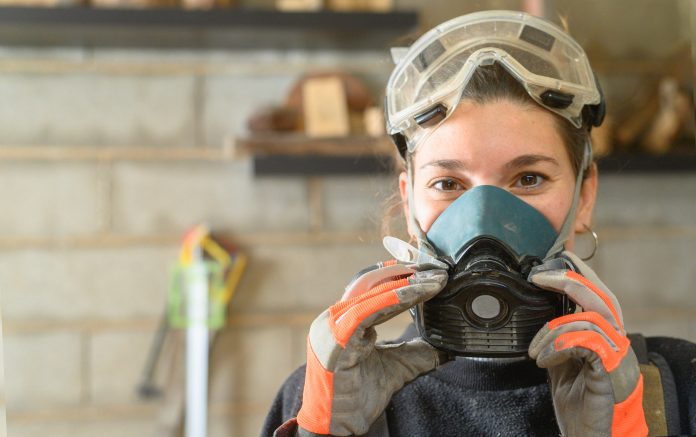Facepiece fit testing is a method of checking that tight-fitting respiratory protective equipment seals adequately to the face
Many workers wear respirators or breathing apparatus to protect their health in the workplace. These devices are collectively known as respiratory protective equipment (RPE).
Respirators filter the air to remove harmful substances there are two types of these tight-fitting and loose-fitting (powered hoods) and breathing apparatus (BA) provides clean air for the worker to breathe.
As an employer, you have a legal responsibility to control substances hazardous to health in your workplace and to prevent and adequately control your employees’ exposure to those substances. Provision of RPE may be necessary as part of your control regime.
Facepiece fit testing is a method of checking that a tight-fitting facepiece matches the wearer’s facial features and seals adequately to their face.
You should carry out a fit test as part of the initial selection of the RPE
Facepieces are available in several different sizes and shapes. The wearer may obtain a better fit (ie pass a fit test) by trying a respirator of a different size, model or make.
Tight-fitting RPE will only provide effective protection if the wearer is clean-shaven.
A fit test does not remove the need for correct and careful day-to-day fitting of the facepiece, which should always include a fit check.
It is good practice to have a system in place that ensures you carry out repeat fit testing of RPE on a regular basis every two years is recommended.
Employers should consider the amount of time a wearer is required to wear RPE in a working day as masks can reduce the amount of oxygen that is available to the wearer.
- Disposable half-masks, reusable half-masks and reusable full-mask continuous wear time, less than one hour.
- Powered or air-fed BA or loose-fitting air-fed hoods can be used for more than one hour.
- Disposable half-masks with NR after the rating refers that they should be disposed of after an eight-hour shift even if only worn for a short period.
There are two basic types of RPE fit testing: qualitative and quantitative
Qualitative fit testing is a pass/fail test based on the wearer’s subjective assessment of any leakage from the face seal region by sensing the introduction of a test agent. These tests are suitable for half masks. They are not suitable for full face masks.

Quantitative fit testing provides a numerical measure of the fit, called a fit factor. These tests give an objective measure of face fit. They require specialised equipment and are more complicated to carry out than qualitative methods. Quantitative methods are suitable for full face masks (but can also be used for half-masks).
Competence RPE fit testing should be conducted by a competent person. Competence can be demonstrated through achieving a BSIF Fit2Fit RPE Fit accreditation.
Employers have a responsibility to provide suitable and sufficient protection to all workers. Those that are unshaven or sporting a beard should be treated the same as any other employee and the use of alternative equipment such as constant flow loose-fitting hoods or helmets should be considered.
Powered or constant-flow airline BA RPE with loose-fitting hoods or helmets do not require fit testing.
Why clean shaven?
RR1502 The effect of wearer stubble on the protection given by Filtering Facepieces Class 3 (FFP3) and Half Masks.
The results of these tests indicate that with the selected filtering facepieces and half-masks the protection given to the wearer may be reduced where stubble is present. This stubble effect may begin within 24 hours from shaving and increases as facial hair grows up to at least seven days.
Percentage inward leakage varied for test subjects and facepieces. For some facepieces for several test subjects, percentage inward leakage increased significantly (to 3%-6% or higher) by the end of day. With other facepieces, inward leakage increased for about 50% of wearers as stubble grew but for other wearers, no significant change in inward leakage occurred.
European Standard EN 529 advises that tightfitting facepieces should not be selected where there is unshaven hair. The definition of unshaven given in this context is “hair which has not been shaved within the previous eight-hour period prior to the work shift”.
Reference documents
INDG 479 Guidance on respiratory protective equipment RPE fit testing.
HSG55 Respiratory protective equipment at work.
RR1502 The effect of wearer stubble on the protection given by Filtering Facepieces Class 3 (FFP3) and half-masks.
*Please note: This is a commercial profile.
Mark James
Managing Director
Britannia Safety & Training Ltd
Tel: 01953 606100


















HSE RR1052 and HSG53 are the correct references.